This Is How You Can Find Your Bitcoin Transaction ID
TABLE OF CONTENTS
To find, trace, and locate a Bitcoin transaction, follow these simple steps:
- Visit a blockchain explorer website. The most popular sites to track Bitcoin transactions are Blockchain.info and bitfeed.live.
- Enter the recipient's Bitcoin wallet address. At the top search bar, enter the wallet address of the receiving Bitcoin wallet.
- Enter the amount of BTC that was sent. To find the Bitcoin transaction sent to the nominated address, enter the amount of BTC sent.
- Obtain the hash ID of the transaction. Once the Bitcoin transaction has been found, the TXID will be shown as a string of numbers and letters.
Find Your Bitcoin Transaction Using Blockchain Explorer
Step 1 – Visit a Blockchain Explorer website
The first step is to visit a blockchain explorer website to find the transaction ID. The most popular blockchain explorers are blockchain.info or bitfeed.live.
Step 2 – Enter the wallet address the funds were sent to
In the Blockchain Explorer search box at the top of the webpage, enter the wallet address to which the BTC funds were sent. This wallet address will contain all of its transfers in chronological order from newest to oldest.
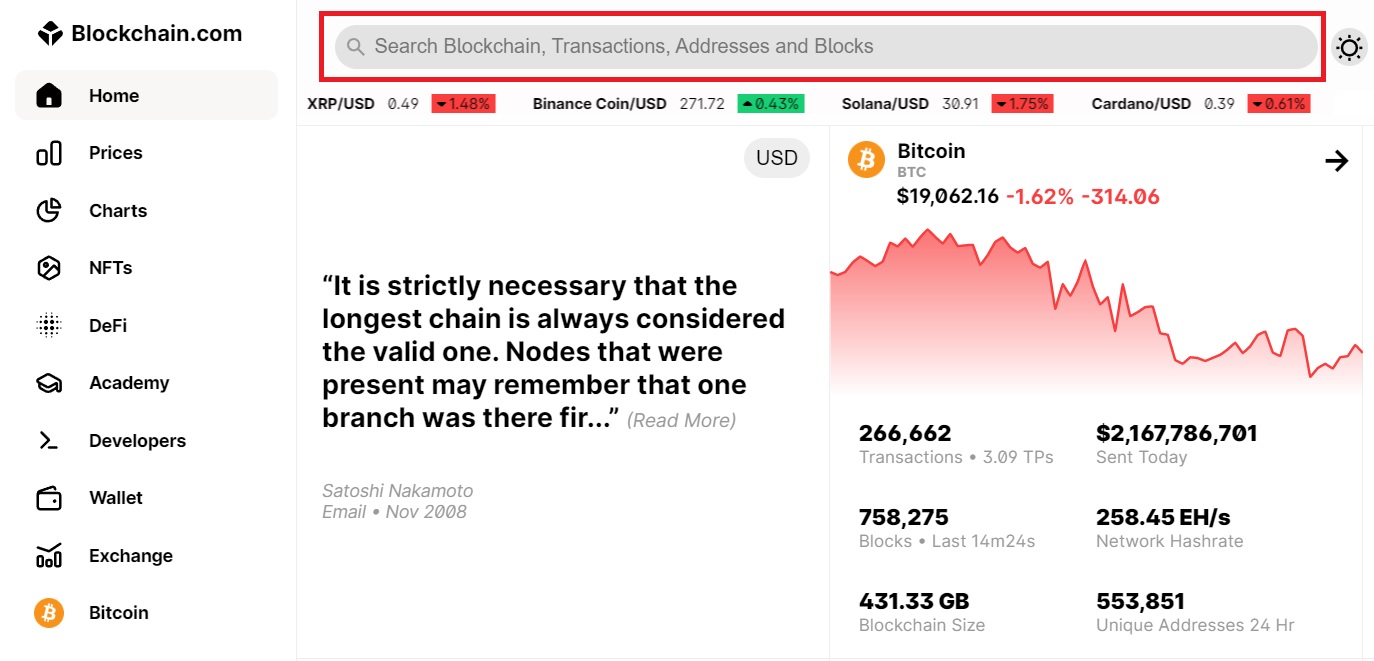
Step 3 – Enter the amount of BTC that was sent
Given that you know the amount you sent, you can use the CTRL+F function of the browser to enter that amount and quickly track the BTC transaction corresponding to the amount sent. For macOS users, the same browser command would be Command+F.
Step 4 – Locate the Bitcoin transaction ID
With the specific transaction found, the TxID will be shown as a long string of numbers and letters above the transaction amount number. On blockchain.info, to view transaction details, simply click on the transaction.
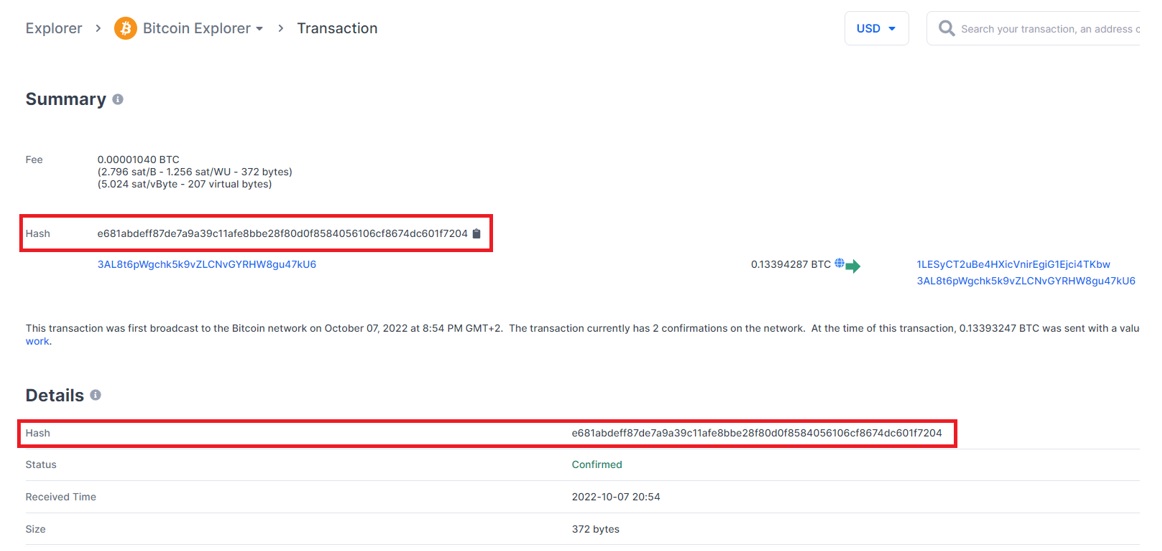
In addition to displaying the BTC transaction fee, and sending and receiving wallet addresses, the last step is to find the transaction ID. This will be referred to several times on the blockchain explorer as “hash.”
By copy-pasting this hash and sending it to the BTC recipient, they can use it to verify the BTC transfer, even if it hasn’t yet been confirmed by miners. To find out how long it takes to transfer Bitcoin, read this article next.
This Is How Bitcoin Transaction IDs Work
Miners are in charge of processing BTC transactions. Therefore, attaching TxID to them. For every data block added, miners receive BTC rewards. To mitigate the cryptocurrency’s inflation by controlling its circulating supply, this block reward is halved every four years.
Presently, miners receive a 6.25 BTC block reward, which will go down to zero by the year 2140 when the last Bitcoin is mined. As a result of mining hash power vs. mining difficulty, it takes ten minutes to mine a block, consisting, on average, of 1.6 MB worth of transaction data.
This means that a transaction could be in the process of being confirmed, which is why TxID is used to verify it was executed. Additionally, because miners only care about transaction data size, it is completely irrelevant if a BTC transaction is worth $100 million or $1,000, as each one is bundled into a block, perfectly visualized here.
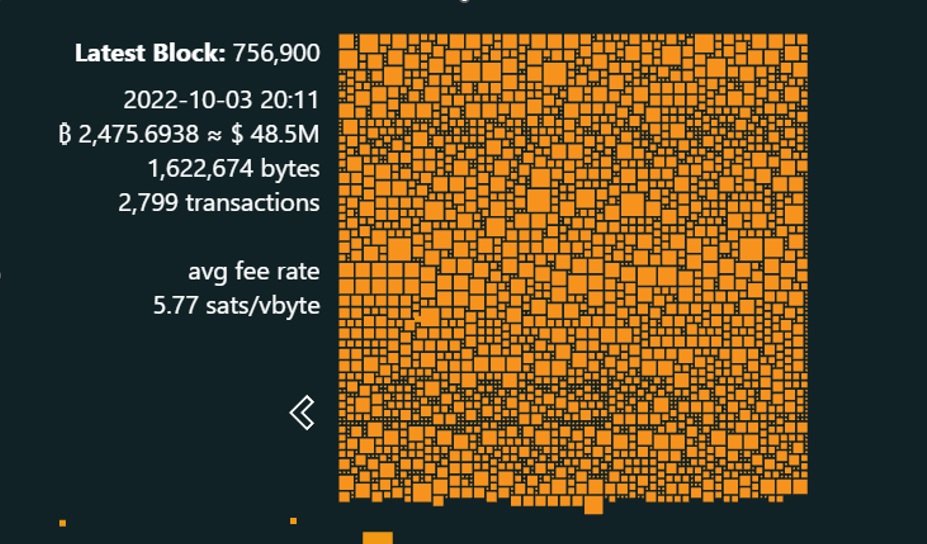
Example of What a Bitcoin Transaction ID Look Like
A Bitcoin block is made up of thousands of transactions. When examining a block, it will show a transaction ID that consists of 64 random characters as letters and numbers without any special prefixes. An example is shown below:
583222b13b0c1c5370eb8420a5cafc96ed66a38f68c9ee33b1900ce3e3a7ea5d
How To Know if a Bitcoin Transaction Is Confirmed?
With the help of a blockchain explorer, all transactions can be checked for confirmation. For example, on bitfeed.live, details are more visualized and streamlined, showing branching transaction inputs and outputs that track BTC to prior transactions. It is also possible to see if the BTC transaction ID is confirmed or unconfirmed. Blockchain explorers such as bitfeed.live and blockchain.info are useful TxID tracking tools for allowing a complete and easily shareable overview of both confirmed and unconfirmed transactions.
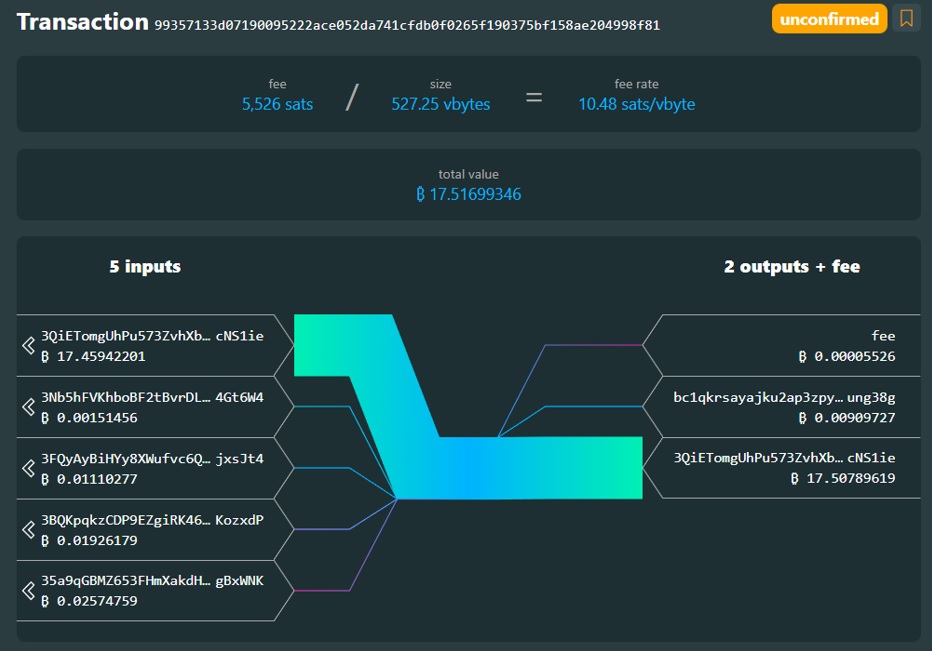
When Would I Need To Find My BTC Transaction ID?
Investors may need proof that a transaction was sent before miners add it as the new block — an unconfirmed block. Likewise, they may want to confirm that the BTC transfer is in the process of being mined. Moreover, finding the TXID is useful to trace back the originator of the wallet if the Bitcoin transaction is unconfirmed and stuck on the network. Vice versa, it is a great tool to track the flow of money in the Bitcoin network as far back as necessary due to its transparency.
This Is How To Find Your Transaction in a BTC Block
When a BTC transaction is sent from wallet address A to wallet address B, it receives a tag called transaction ID or TxID. Another name for it is transaction hash, referring to the blockchain’s cryptographic hash function to safely validate data inputs. This is to ensure that no two transactions can be the same, thanks to a unique string of letters generated by the hash function. As such, they hold no personal information, so TxID can be safely shared.
For this reason, all BTC wallets generate TxID, including cryptocurrency exchanges. For example, on Binance, TxID is viable under Wallet → Overview → Transaction History. Alternatively, they can visit a blockchain explorer to locate a particular transaction ID.
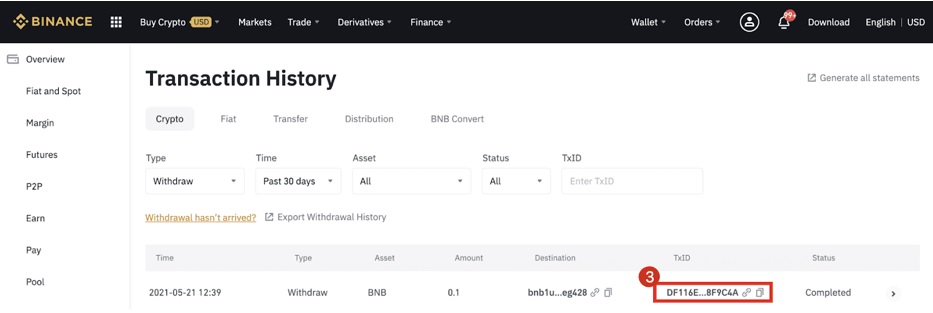
Frequently Asked Questions
What Is A Bitcoin Transaction ID?
To keep track of all blockchain transfers, all cryptocurrency transactions receive an identifying tag called transaction ID. This way, all transactions in the blockchain’s entire history are verifiable and traceable. In the case of Bitcoin (BTC), the transaction is tagged with a unique transaction ID, commonly referred to as TxID. Every time a person makes a BTC transfer from one wallet address to another, it receives a TxID.
Are Bitcoin transaction IDs unique?
Yes, Bitcoin’s hash function generates a unique string of letters and numbers for everyone. This makes it easy to identify and track a Bitcoin transaction.
What happens if Bitcoins are sent to the wrong address?
Blockchain transactions, whether wrong or right, cannot be reversed. After all, for public ledger to be immutable and instill confidence against tampering, it cannot allow chargebacks. In such cases, manual communication and cooperation with the other party are required. For more information on how to recover lost Bitcoin, read this article.
What if you cannot find TxID on blockchain explorer?
Verify that you are looking at Bitcoin transactions specifically, not alternative coins like Bitcoin Cash (BCH) or Litecoin (LTC). If you haven’t made any typos in the search bar, the transaction will be visible in real-time, as it is sent.
Can the Police trace a Bitcoin transaction?
The full transparency of the blockchain network makes it easy for anyone to trace Bitcoin transactions. However, using a tool such as a Blockchain Explorer does not reveal personal details which makes it difficult for the Police to confirm the identity of the sender or receiver. Although, law enforcement agencies can cooperate with crypto exchanges as they do collect personal information through a KYC process.